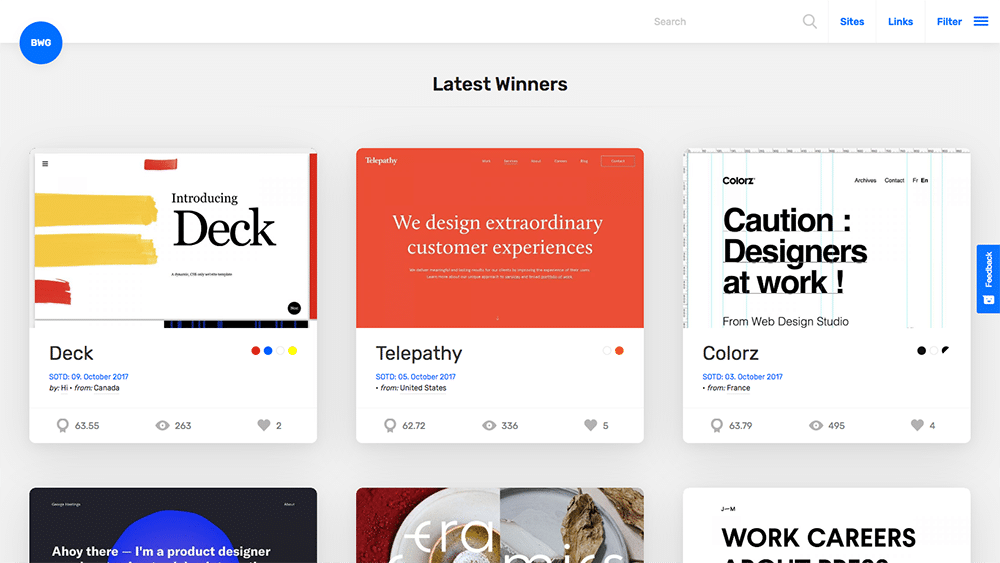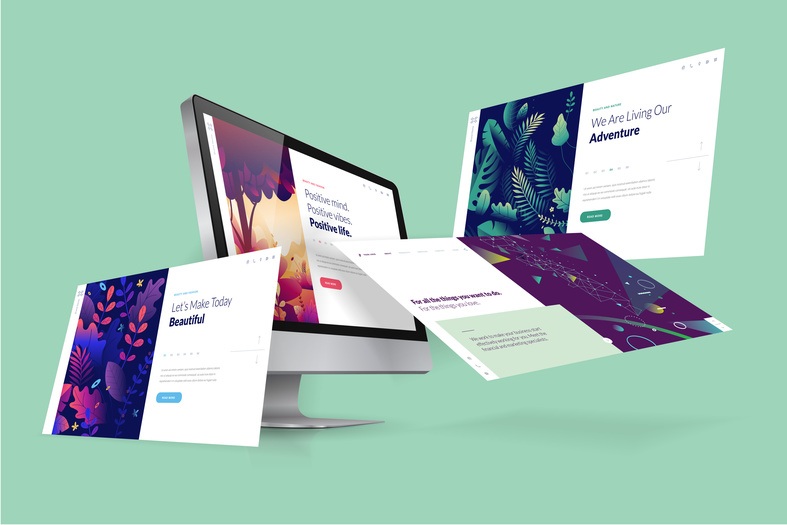Leading Website Style Trends for 2024: What You Required to Know
As we approach 2024, the landscape of site layout is readied to undertake significant makeovers that focus on user experience and involvement. Secret trends are emerging, such as the raising adoption of dark setting for enhanced accessibility and the integration of vibrant microinteractions that elevate individual communication. Additionally, a minimalist aesthetic remains to dominate, concentrating on performance and simpleness. The most notable innovations might exist in the world of AI-powered customization, which guarantees customized experiences that prepare for individual requirements. Recognizing these patterns will be crucial for any individual wanting to stay relevant in the digital sphere.
Dark Mode Design

The psychological influence of dark mode ought to not be overlooked; it conveys a feeling of modernity and class. Brands leveraging dark mode can boost their digital presence, appealing to a tech-savvy audience that values modern layout aesthetics. Furthermore, dark mode permits greater contrast, making message and visual elements stand apart a lot more successfully.
As internet developers look to 2024, integrating dark mode options is coming to be progressively crucial. This fad is not just a stylistic option yet a calculated decision that can considerably improve user involvement and satisfaction. Firms that welcome dark mode design are most likely to bring in customers looking for a visually attractive and seamless surfing experience.
Dynamic Microinteractions
While lots of style aspects concentrate on wide visuals, dynamic microinteractions play a vital function in improving individual involvement by giving refined feedback and animations in response to customer actions. These microinteractions are small, task-focused animations that guide users via a website, making their experience extra pleasurable and intuitive.
Instances of dynamic microinteractions include button float results, filling animations, and interactive kind recognitions. These elements not just offer useful objectives however likewise create a sense of responsiveness, using customers instant feedback on their actions. For example, a shopping cart icon that stimulates upon adding a thing gives visual peace of mind that the action succeeded.
In 2024, integrating dynamic microinteractions will certainly become significantly important as customers anticipate an even more interactive experience. Reliable microinteractions can improve usability, lower cognitive tons, and keep individuals involved longer.
Minimalist Looks
Minimal visual appeals have obtained significant grip in web style, focusing on simpleness and performance over unnecessary decorations. This strategy concentrates on the crucial components of a site, getting rid of mess and allowing users to navigate with ease. By employing enough white area, a limited shade palette, and straightforward typography, developers can produce visually enticing interfaces that improve customer experience.
Among the core principles of minimalist layout is the notion that much less is extra. By getting rid of distractions, sites can interact their messages better, directing customers towards wanted activities-- such as signing or making an acquisition up for a newsletter. This clearness not only improves usability however likewise aligns with contemporary customers' preferences for uncomplicated, effective online experiences.
Furthermore, minimalist visual appeals contribute to faster filling times, a critical consider user retention and search engine positions. As mobile surfing continues to dominate, the need for responsive layouts that preserve their elegance across devices comes to be increasingly crucial.
Accessibility Features

Trick access attributes include alternative text for photos, which supplies summaries for individuals relying upon display viewers. Website Design. This guarantees that visually damaged people can comprehend visual web content. Additionally, appropriate heading frameworks and semantic HTML enhance navigation for Get the facts users with cognitive specials needs and those using assistive technologies
Color contrast is an additional crucial element. link Web sites need to employ enough comparison ratios to ensure readability for customers with aesthetic disabilities. Additionally, key-board navigation must be smooth, enabling individuals who can not utilize a mouse to accessibility all web site features.
Applying ARIA (Available Abundant Web Applications) functions can even more improve use for dynamic web content. Furthermore, integrating captions and transcripts for multimedia content fits customers with hearing disabilities.
As accessibility comes to be a conventional assumption instead of a second thought, accepting these attributes not just widens your audience yet likewise straightens with ethical design techniques, cultivating a much more inclusive digital landscape.
AI-Powered Customization
AI-powered customization is changing the means web sites engage with users, tailoring experiences to specific preferences and habits (Website Design). By leveraging advanced algorithms and equipment knowing, sites can assess customer data, such as searching background, group details, and communication patterns, to create an extra personalized experience
This customization expands beyond simple referrals. Web sites can dynamically adjust web content, layout, and even navigating based upon real-time individual habits, making sure that each visitor encounters an unique journey that resonates with their specific demands. As an example, shopping sites can showcase items that align with a customer's past purchases or interests, boosting the possibility of conversion.
In addition, AI can help with anticipating analytics, permitting websites to anticipate user demands before they also express them. An information platform may highlight articles based on a user's analysis habits, keeping them engaged longer.
As we relocate into 2024, integrating AI-powered personalization is not simply a fad; it's coming to be a need for companies intending to improve individual experience and contentment. Companies that harness these technologies will likely see enhanced involvement, greater retention this hyperlink rates, and inevitably, enhanced conversions.
Conclusion
Finally, the website style landscape for 2024 emphasizes a user-centric technique that prioritizes inclusivity, readability, and engagement. Dark mode choices improve functionality, while dynamic microinteractions improve user experiences through prompt feedback. Minimal aesthetics improve functionality, making sure quality and ease of navigating. Ease of access attributes serve to accommodate varied customer requirements, and AI-powered customization tailors experiences to private choices. Collectively, these fads show a dedication to creating web sites that are not only visually attractive but additionally highly efficient and inclusive.
As we approach 2024, the landscape of web site design is established to undertake significant changes that prioritize individual experience and involvement. By getting rid of diversions, websites can communicate their messages more successfully, directing customers towards preferred actions-- such as making an acquisition or signing up for an e-newsletter. Internet sites should employ adequate contrast ratios to make certain readability for users with visual disabilities. Key-board navigating need to be seamless, permitting customers who can not utilize a mouse to accessibility all site functions.
Internet sites can dynamically change content, layout, and also navigation based on real-time customer habits, ensuring that each visitor encounters a special journey that reverberates with their particular demands.